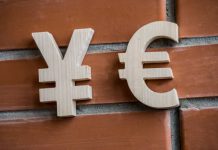Markets
The Fed maintained the policy rate at 0-0.25% yesterday as well as its $120bn monthly bond buying pace. Tweaks to the policy statement were insignificant. Growth however was boosted to 6.5% this year (4.2% in December) and to 3.3% in 2022 (3.2%) before normalizing in 2023 to 2.2% (2.4%). The Fed sees inflation temporarily jumping in 2021 (PCE 2.4% vs. 1.8%) to ease in the years thereafter to around 2%. Unemployment is envisaged lower. Due to the rosier outlook more members already expect higher rates in 2022. However, the majority still foresees flat rates through 2023, something Powell stressed multiple times. Asked about the divergence of the improved forecasts and the stable rate path, Powell said the Fed first wants to see actual, not projected, progress in inflation and maximum employment. There’s no rate hike or tapering debate before that happens. This came as a relief to markets. The initial bond selloff in the run-up to the Fed reversed. The US yield curve steepened with yields down 3.5 bps (3-yr, reversing a 1.5 bps move higher) but up 4.1 bps at the long end. Powell has no major issues with higher LT yields as long as moves aren’t disorderly or tighten financial conditions persistently. The dollar suffered a blow as markets adjusted their rate hike expectations. EUR/USD jumped from the 1.19 area to 1.198. The trade-weighted DXY retreated from a 92 intraday high to finish at 91.44. We would be very cautious in interpretating yesterday’s market moves, both on bond and dollar FX markets. Powell dodged the bullet, but we see markets continuing to test the Fed’s commitment going forward, especially when economic data continue to improve as the vaccination campaign steams ahead and the economy (fully) reopens. This morning’s Asian market reaction is testament (higher US yields, also in medium segment of the curve). EUR/USD should capture 1.2011 first for some technical reprieve.
More central bank news this morning. Newspaper Nikkei reported the Bank of Japan would widen the range around its 0% 10-yr target from 20 bps to 25 bps on either side when it concludes its review tomorrow. BoJ officials stopped short of formally excluding this option last week. Japanese bond yields jumped 2-4bps before paring gains. The yen briefly strengthened (USD/JPY sub 109 since yesterday). The Aussie dollar outperforms this morning on a strong jobs reports. The kiwi dollar shrugs off disappointing and outdated Q4 GDP figures (-1% q/q vs. 0.2% expected). • And central bank news to finish. Today the Bank of England holds its March policy meeting. Based on the February projections, the market concluded the next step in BoE policy would be a tightening rather than easing. This supported both UK yields and sterling. EUR/GBP declined to important support at 0.856 over recent weeks. The Bank of England isn’t particularly worried about the rise of longer-term yields (both real yield and inflation expectations) but will probably strike a cautious note, highlighting uncertainty warrants easy policy for the time being. Similar to the Fed yesterday, this could hurt sterling in a daily perspective. However, the first meaningful technical reference in EUR/GBP is still some way off. For the downside alert to be called off, EUR/GBP should retake the 0.868 area.
News Headlines
The Brazilian central bank raised its base rate for the first time in more than 6 years and by more than expected, from 2% to 2.75%. The BCB also flagged a similar 75 bps hike in May, to 3.5%, in their base scenario which calls for a “partial normalization”. In such “partial” cycle, the central bank probably doesn’t immediately envision a return to neutral levels (eg 6.5%; start of 2019-2020 easing cycle). The central bank expects 5% inflation this year, well above the 3.75% target, and 3.5% next year. Risks are asymmetrically tilted to the upside. Fiscal uncertainties remain a challenge while it’s no secret that the BCB has intervened against real weakness. USD/BRL returned below 5.60.
Dutch PM Rutte’s center-right VVD-party is set to win Dutch parliamentary elections. His party won 36 seats (+3). The pro-European D66 came in second (27 seats; +8), overtaking the far-right party of Geert Wilders (17 seats; -3). VVD and D66 were both part of the previously ruling 4-party coalition. Taking the center-right Christian Democratic party also again aboard (14 seats; -5) would be sufficient for a small majority in the 150-seat parliament. Traditional left (PVDA; 9 seats; flat) and green (8 seats; -6) parties continued to suffer at the ballot box.












